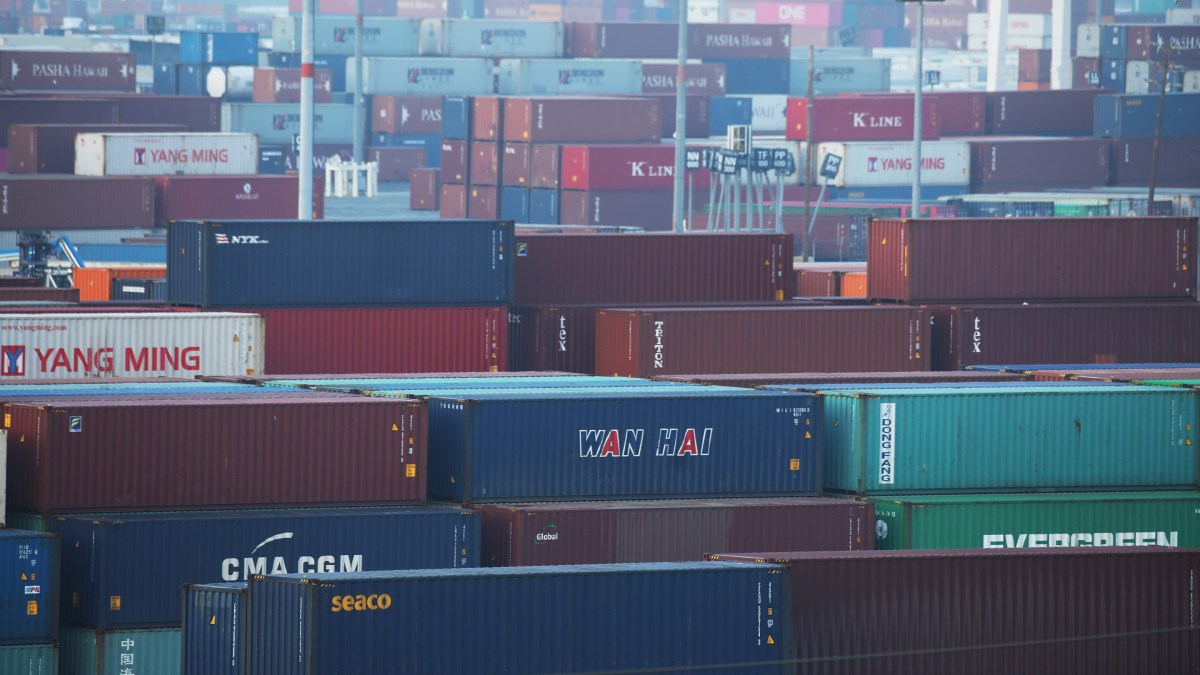
Factory builds and other long-term investments between China and the United States declined to $10.9 billion in the first half of 2020, the lowest level in nine years, according to a report from the Rhodium Group economic research firm and the National Committee on U.S.-China Relations, which advocates for bilateral ties.
One key finding from the authors: The Trump administration’s tariffs against Chinese imports, designed to make manufacturing more expensive on the mainland and bring factory jobs back to the United States, has not succeeded.
“The tariffs failed,” Stephen Orlins, president of the U.S.-China committee, said. “They succeeded in some relocation of production from China to other lower tariff countries: Vietnam, Malaysia, Indonesia, Sri Lanka. But it did not bring manufacturing back to the U.S.”
Chinese investment in the U.S. also fell because of the pandemic recession, as well as American protectionist policies against Chinese firms including TikTok, the report said. Those measures have pressured Beijing to retaliate against foreign companies and investors in China, said Rhodium Group partner Thilo Hanemann.
“Foreign companies may be hesitant to further deepen their footprint inside of China,” Hanemann said. “They might diversify away from their Chinese manufacturing bases over the next couple of years.”
Political frictions may apply to strategically important sectors, like semiconductors, but Hanemann expects U.S.-China investment to continue in other areas, including KFC’s inroads into the mainland market.
Continued investments matter in the big picture, he added.
“We know from history that two-way trade and investment and integration decreases the risk of conflict,” Hanemann said. “If China really is isolated as a country, one of the biggest risks for all of us will be higher risk of a serious military confrontation.”
What’s going on with extra COVID-19 unemployment benefits?
It’s been weeks since President Donald Trump signed an executive memorandum that was supposed to get the federal government back into the business of topping up unemployment benefits, to $400 a week. Few states, however, are currently paying even part of the benefit that the president promised. And, it looks like, in most states, the maximum additional benefit unemployment recipients will be able to get is $300.
What’s the latest on evictions?
For millions of Americans, things are looking grim. Unemployment is high, and pandemic eviction moratoriums have expired in states across the country. And as many people already know, eviction is something that can haunt a person’s life for years. For instance, getting evicted can make it hard to rent again. And that can lead to spiraling poverty.
Which retailers are requiring that people wear masks when shopping? And how are they enforcing those rules?
Walmart, Target, Lowe’s, CVS, Home Depot, Costco — they all have policies that say shoppers are required to wear a mask. When an employee confronts a customer who refuses, the interaction can spin out of control, so many of these retailers are telling their workers to not enforce these mandates. But, just having them will actually get more people to wear masks.
You can find answers to more questions on unemployment benefits and COVID-19 here.
As a nonprofit news organization, our future depends on listeners like you who believe in the power of public service journalism.
Your investment in Marketplace helps us remain paywall-free and ensures everyone has access to trustworthy, unbiased news and information, regardless of their ability to pay.
Donate today — in any amount — to become a Marketplace Investor. Now more than ever, your commitment makes a difference.
tinyurlis.gdv.gdv.htu.nuclck.ruulvis.netshrtco.detny.im
مقالات مشابه
- استدلال های خلاص شدن از قایق بادی
- Facebook را نظارت هیئت مدیره در نهایت اینجا است. چگونه آن را تحت تاثیر قرار دهد محتوای اعتدال?
- فالوور واقعی اینستاگرام چیست؟ آیا میتوان به آن اعتماد کرد؟
- COVID-19 makes a difficult voting process for people who are homeless even harder
- شرکت صادرات و واردات کالاهای مختلف از جمله کاشی و سرامیک و ارائه دهنده خدمات ترانزیت و بارگیری دریایی و ریلی و ترخیص کالا برای کشورهای مختلف از جمله روسیه و کشورهای حوزه cis و سایر نقاط جهان - بازرگانی علی قانعی
- شرکت صادرات و واردات کالاهای مختلف از جمله کاشی و سرامیک و ارائه دهنده خدمات ترانزیت و بارگیری دریایی و ریلی و ترخیص کالا برای کشورهای مختلف از جمله روسیه و کشورهای حوزه cis و سایر نقاط جهان - بازرگانی علی قانعی
- Tofu Scramble Recipe
- شرکت صادرات و واردات کالاهای مختلف از جمله کاشی و سرامیک و ارائه دهنده خدمات ترانزیت و بارگیری دریایی و ریلی و ترخیص کالا برای کشورهای مختلف از جمله روسیه و کشورهای حوزه cis و سایر نقاط جهان - بازرگانی علی قانعی
- شرکت صادرات و واردات کالاهای مختلف از جمله کاشی و سرامیک و ارائه دهنده خدمات ترانزیت و بارگیری دریایی و ریلی و ترخیص کالا برای کشورهای مختلف از جمله روسیه و کشورهای حوزه cis و سایر نقاط جهان - بازرگانی علی قانعی
- طراحی وب سایت سفارشی چگونه است